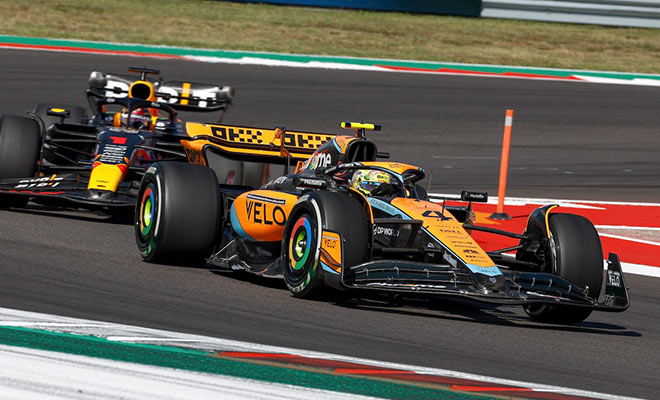In 2023, McLaren F1 dramatically caught up to the leading pack, often emerging as the second strongest team in certain races towards the end of the year. However, there’s still a significant gap to close to reach Red Bull, who holds the top position. Is it possible to bridge this gap over the winter or during the 2024 season? Andrea Stella, the team director, provides insights a few weeks before the season’s first presentations.
Stella reflects on how close they were to Red Bull at the beginning and end of the season. “In some qualifying sessions, we were very close or even faster, like in Qatar or Brazil. In the races, Red Bull pulls ahead, especially in the second half of the stints. They have a two to four-tenths of a second advantage over us. We need to make up this time during the winter. At the start of the season, we were one second slower in qualifying and one and a half seconds slower in races.”
On average, Red Bull was half a second per lap faster than in 2022. Does Stella anticipate a slower rate of performance improvement, and is there a chance to catch up to Red Bull?
“We’re not yet at the point where the development curve flattens with these ground-effect F1 cars. I expect another significant leap forward in 2024. Perhaps the gains won’t be as substantial in the second half of the season. Looking back, these rules have given us many different geometries and development directions. Before 2022, most people told us that the cars would all look similar. That prediction turned out to be false. I still see opportunities to find time per lap.”
Red Bull has an edge over the competition with a unique chassis and transmission architecture. Is this harder to replicate?
“These features don’t directly translate to better lap times. They provide more leeway with the body volumes, which allows for more play in aerodynamics. But effective aerodynamic development is still crucial. Red Bull had the foresight to design their car’s configuration to maximize its potential. However, it would be unfair to attribute their success solely to these aspects. They’re fast because they’ve done a better job than anyone else in overall design, both aerodynamically and mechanically.”
It was often noted in 2023: McLaren made progress in performance, but the car’s weaknesses remained the same. Is it difficult to eliminate these with this generation of F1 cars?
“We didn’t explicitly work on the car’s weaknesses; we simply tried to improve its aerodynamic efficiency. That’s why our drivers still complain about the same issues. The car was just as challenging to drive as at the start of the season. We just became faster. The more grip you find, the better the vehicle’s balance will be. We will specifically focus on our weaknesses in 2024. We couldn’t solve this problem in 2023 because it would have required changing certain areas of the car that couldn’t be modified. That’s what’s planned for our new F1 car.”
“We found more grip with the entire package. This had a more significant impact on worn tires than on new ones. Compared to the beginning, the car handled slow corners better with worn tires than with new ones. We caught up to Red Bull more in races than in qualifications. For example, in Brazil, we still lost a lot of time to them in turns 8, 9, and 10. Less so in the race. But this isn’t the result of specific development, but simply because we found more grip.”
McLaren F1 Red Bull 2024 Bridging the Gap. McLaren F1 Red Bull 2024 Bridging the Gap
Read also:
- HORNER SUPPORTS GENERAL MOTORS’ POTENTIAL ENTRY INTO F1
- Following us on Facebook and Twitter.
